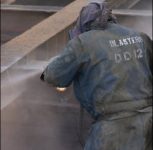Protect Environment and Worker Health by Creating a Pest-Free, Pesticide-Free Workplace
Yesterday we looked at the possible routes of exposure and toxic effects of pesticides on workers in nonfarm occupations who do not apply pesticides. These workers—as well as customers and clients—can be exposed to toxic doses of pesticide residues after pesticides are applied in the workplace. One way to prevent those types of exposures is […]










